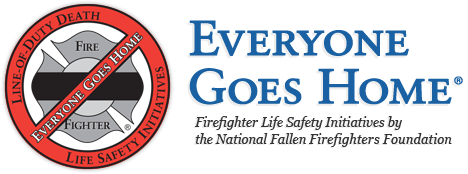Did you know a fire department is three times more likely in any given year to experience a suicide among its membership than a line-of-duty death? Fortunately, suicide is preventable and help is available. The National Fallen Firefighters Foundation (NFFF) has made suicide research and awareness a priority and released a new report, Confronting Suicide in the Fire Service: Strategies for Intervention & Prevention to address the growing issue and need for further research and funding.
The World Health Organization (WHO) and the Centers for Disease Control (CDC) recognize suicide as a major public health problem and are focusing attention on this growing national and international issue. According to the WHO, “More than 800,000 people worldwide die from suicide every year… one every 40 seconds. For each suicide there are many more people who attempt suicide every year.” The CDC reports suicide is the 10th leading cause of death for all Americans taking 39,000 lives and is responsible for nearly 500,000 self-inflicted injuries annually.
“The incidence of suicide affects all segments of society, therefore every sector or organization within the public plays a role in working toward prevention. As the incidence of suicide was becoming a growing concern within the fire service, the foundation realized that we could help raise awareness about the issue and hopefully draw more attention to research and education,” said Chief Ron Siarnicki, executive director of the NFFF.
The report summarizes suicide statistics, risk factors, public health assessment, and prevention tactics. Most importantly the report highlights recommendations for future research based on findings from national summits in 2011 and 2013 to measure the prevalence of suicide among firefighters; develop prevention, screening and intervention efforts; and establish a national agenda with an action plan to reduce suicides. Recommendations include:
- Richard Gist, PhD, principal assistant to the director of the Kansas City (MO) Fire Department is working with the Medical University of South Carolina to create the application.
- Creating awareness through social media, posters, pocket cards and information is an effective way to create some awareness. Based on consensus from the 2013 summit, a new program, Ask, Care, Take (ACT) is being created.
Both summits and the report are a result of the Foundation’s Everyone Goes Home® program and outlined in Firefighter Life Safety Initiative # 13, Provide firefighters and their families with access to counseling and support.
For the full report, and other resources such as: Suicide: What you need to know A Guide for Clinicians, and Suicide: What you need to know A Guide for Fire Chiefs, go to flsi13.everyonegoeshome.com


